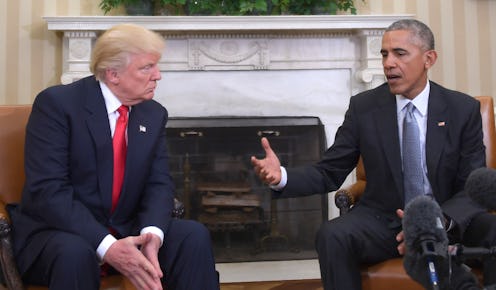News
Look To 2020 State Legislatures For Hope & Change
Disappointment is real. Despair is real. But most of us fall under the disturbingly wide umbrella of what I’m going to call the Tubthumping generation: we get knocked down, but we get up again, and they ain’t ever gonna keep us down. The key is that when we get back up, we need to get up smart. So, get ready to fight, because 2020 is only four years away. And I’m not talking about the presidential election — the battle for America’s future will be fought in the state legislatures.
They’re not as sexy as the presidential contests, or even the crucial Senate and House races, but those boxes all the way at the bottom of the ticket are actually the most crucial choices you can make as a voter. If you need a quick primer on this, John Oliver did an entire segment on the importance of state legislatures in the lead up to the 2014 midterm elections. “Increasingly, [State legislatures are] the places where most legislation is actually taking place,” Oliver said on HBO's Last Week Tonight, noting that while the 113th Congress had passed 185 pieces of legislation, state legislatures had passed nearly 24,000 bills.
Oliver goes on to point out that a lot of these bills have a direct impact on our everyday lives, and in the last few years we’ve seen disturbing examples of this: Texas’ House Bill 2 law, which attempted to regulate the state’s abortion clinics into oblivion (until the Supreme Court stopped it); North Carolina’s notorious bathroom law (also confusingly designated as House Bill 2) which forces Transgender people to use bathrooms according to the gender of their birth; and the numerous Religious Freedom laws, which legalize discrimination against LGBTQ people if your faith says it’s cool.
But state legislatures have another crucial role: every ten years, they redraw the congressional boundaries following the decennial census. The legislatures that are elected to state houses across the country in 2020 won’t just be passing laws — they’ll be having a crucial impact on the makeup of Congress. (True, gerrymandering isn’t the whole reason for the House’s lopsided Republican tilt, but it’s still a huge problem.)
“What about 2018?” you might ask, and that’s fair, but for a number of reasons, there may be less bang-for-the-buck for Democrats in the mid-terms. First, those elections tend to turn out Republicans more than Democrats. Second, the Senate map looks bad for Dems in 2018 the way it was supposed to look bad for Republicans this year. Third, the House is still stacked to favor Republicans. While the 2018 election shouldn’t be written off entirely — and who knows what the effect of a President Trump on the U.S. political map will be — Dems stand to get a much bigger bang for their buck if they invest in more local races in 2020.
So what can you do? First off, find out who your state representatives are, and whether or not they’re worth a damn, and when they're up for reelection (not all state legislators are elected in normal election years). Second, if they are worth a damn, figure out how you can support them, either with money or time; and if they're not, keep an eye on the race and try to support their challenger. Third, talk to everyone you know about doing the same, especially in states with closely divided legislatures. So, grab your whiskey/vodka/lager/cider drink, sing a song that reminds you of the good times, but look ahead and take action for the better times.
